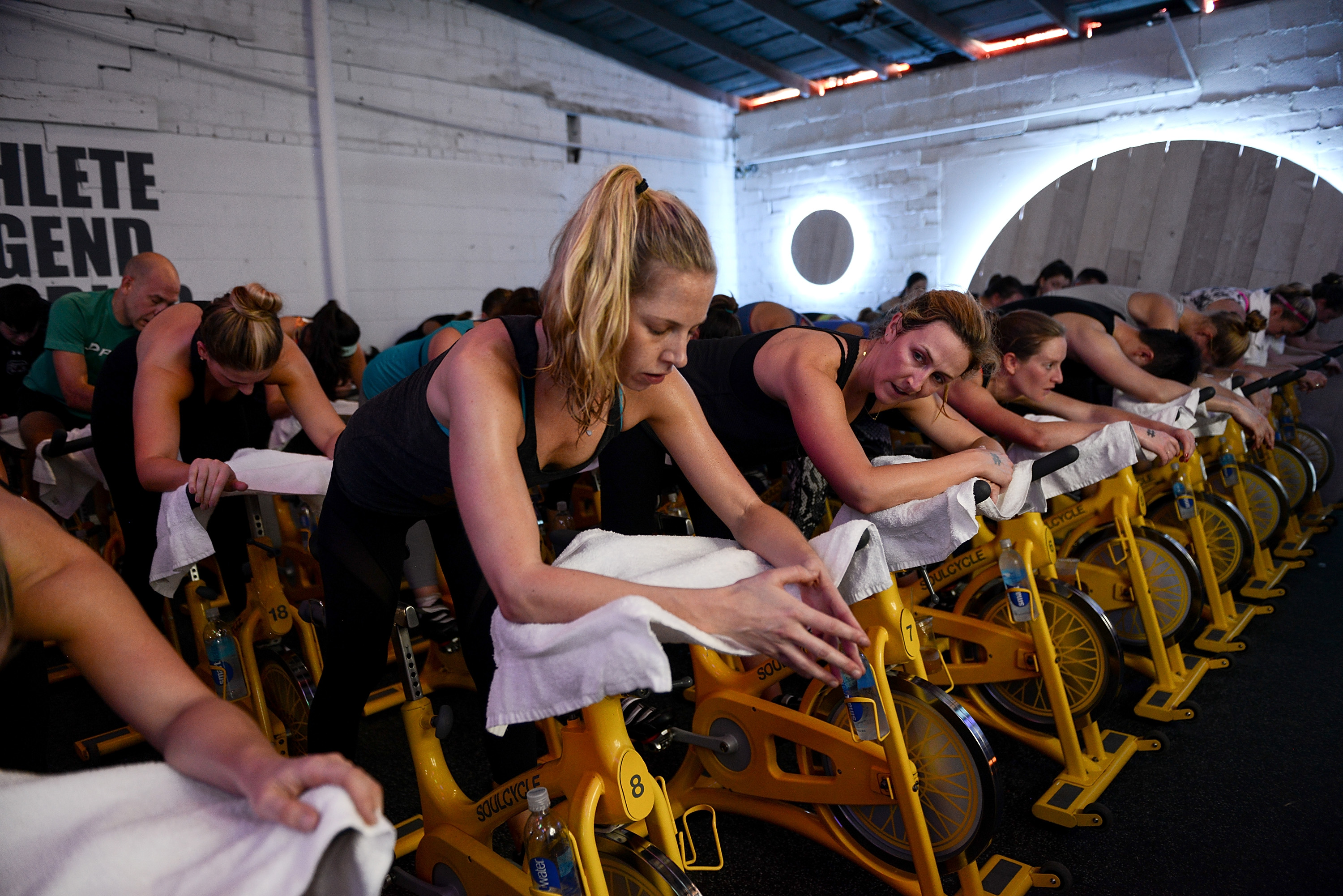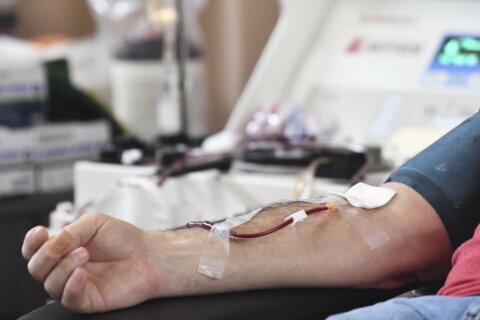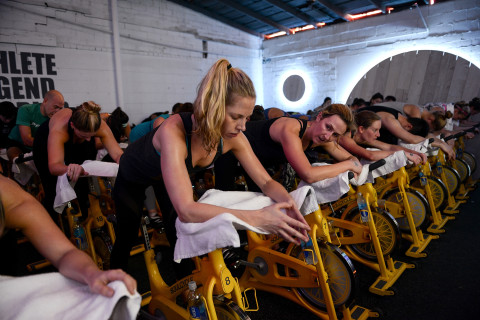
WASHINGTON — If you walk or drive around the D.C. area, you may see the names of boutique gym classes — solidcore, CorePower Yoga, Zengo Cycle, Orangetheory Fitness, SoulCycle and more — and think, “I’d love to give one of those a try, but I just don’t know what I’d be getting into.”
With no shortage of classes, it’s tough to make an informed decision about which franchise might be the best for you and your wallet. There are literally dozens of exercise classes to attend, and your opinion may differ depending on your personality, your personal finances and your fitness goals. After all, certain workouts are tailored for specific training goals or muscle groups.
WTOP has tested some of the popular local gym classes around the region to help you decide which ones may work for you, lift the curtain and lessen the intimidation factor. Check out some observations on popular classes around the region. We’ve also broken down where to find the classes, the cost to participate, details about intro rates and what you need to bring.
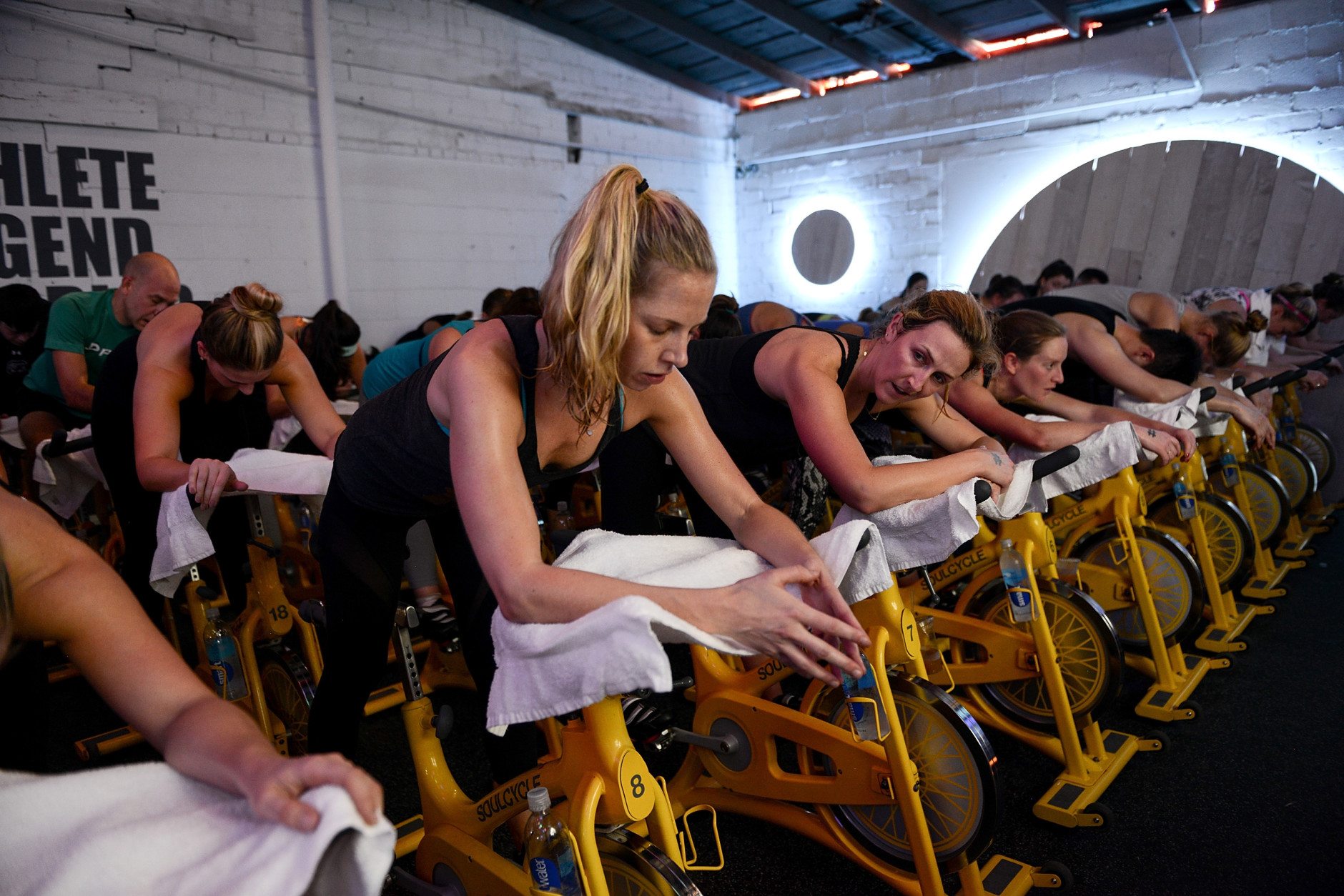
This is the only gym class I’ve ever gone to where I’ve been brought to tears – not by pain and suffering, but by the way the instructor encouraged us to dedicate the workout to someone who couldn’t be there. This class happened to come on Mother’s Day, and while my mother is doing great, I couldn’t help but think of my aunt who died in early 2017. She would have been pleased to know I was up early sweating on a Sunday morning. The class is great for someone who knows what they want from a workout and how to get it without feedback coming from digital display. Of course, there will be an instructor leading you through uphill climbs and sprints, and even getting off the bike to give you a little extra push if you need it. But the SoulCycle bikes, unlike the ones used at rival Flywheel, or even the ones you may find at your local gym, do not have displays that show you how much work you’re doing. If you do need this, you may be smart to invest in a heart-rate monitor you can wear in class. The SoulCycle classes include some choreographed “tap backs” and handlebar push-ups. They do require a little extra focus in order for a rider to get the workout he or she has in mind when walking into the studio. (Alli Harvey/Getty Images for Spotify)
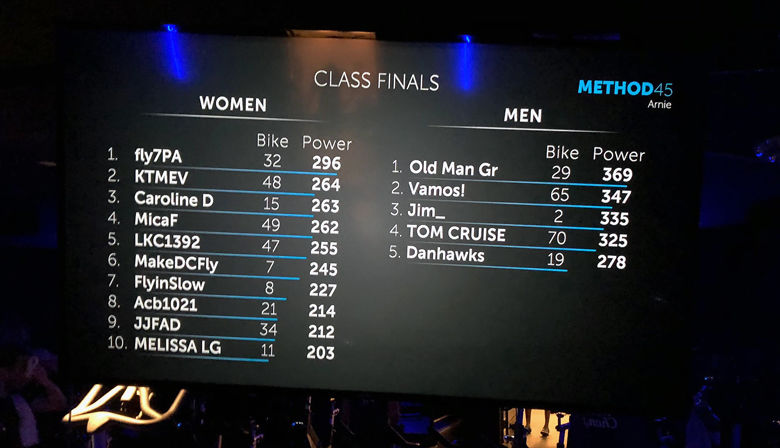
The lights go down and the music volume goes up. Once the class started it got loud — up to 11 loud. Bring some earplugs or grab them at the front desk on your way in. This cycling class is both hard and extremely fun if you’re someone who likes a little competition. For 45 minutes you push yourself through a series of uphills, downhills and timed sprints. Your bike has a display showing your revolutions per minute and resistance and how much work you’re doing. But when your name is up on one of the large video screens for all to see, pride takes over and makes you work even harder. This class is good for those who respond to external motivation. The “torq boards” are divided between men and women, so you can see how you’re doing compared to the others in the class brave enough to put their numbers up. Each class has three or four 30-second to 1-minute sprints, and no one wants to lose those. You’ll find yourself going all out without any hesitation. The standard workout, known as “Method” is 45-minutes long and includes an upper body component with a weighted bar. Perks of Flywheel? Most studios have complimentary apples and bananas on hand so you can grab a healthy snack on the way out the door. (WTOP/Dan Friedell)
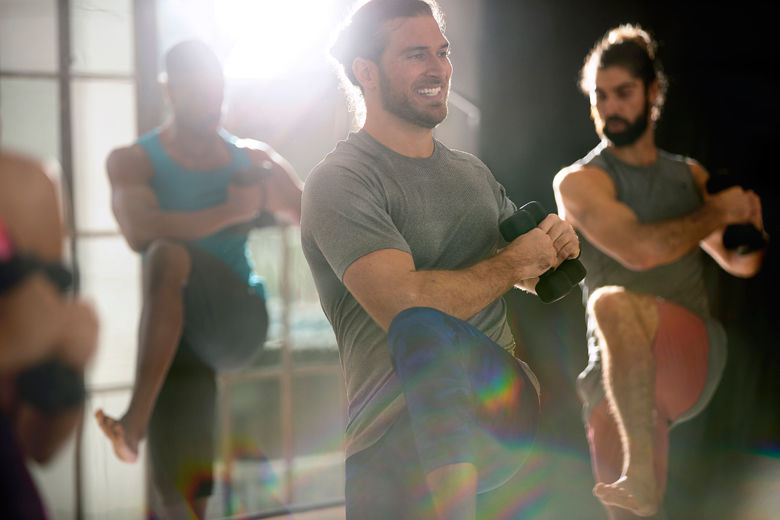
The yoga studio originated in Denver and has locations nationwide. CorePower has consistency with its classes no matter where you join in, and each franchise will be sure to give you a Level 1 yoga class on the road that’s very similar to the Level 1 yoga class you’re comfortable with back home. The only drawback to the CorePower style (based on a class taken at the Falls Church studio) is that while yoga is designed to be an inward-focused practice, those new to yoga will have to do quite a lot of looking around the room to follow the progressions. Unlike what you may expect from yoga classes you’ve seen in popular culture, the CorePower instructor does not stay in the front of the studio and demonstrate all the moves as she narrates instructions to the students. With yoga and any other classes that require some choreography, it can be intimidating the first time around. Sometimes you’re paralyzed, feeling like you can’t get a good workout if you’re not moving on cue. But even though I got lost here and there, I did get a good sweat going in the Level 1 class. The flagship of the CorePower franchise, however, is called Yoga Sculpt, and it is a totally different animal. The workout combines cardio, light weights, lots of repetitions and has elements you may already be familiar with if you’ve done kickboxing, Les Mills’ BodyPump or any other high-energy group exercise class. This class has a slightly elevated room temperature and left me drenched in sweat. If you’re doing this class, bring multiple towels and be ready to take a shower afterward. (Courtesy CorePower Yoga)
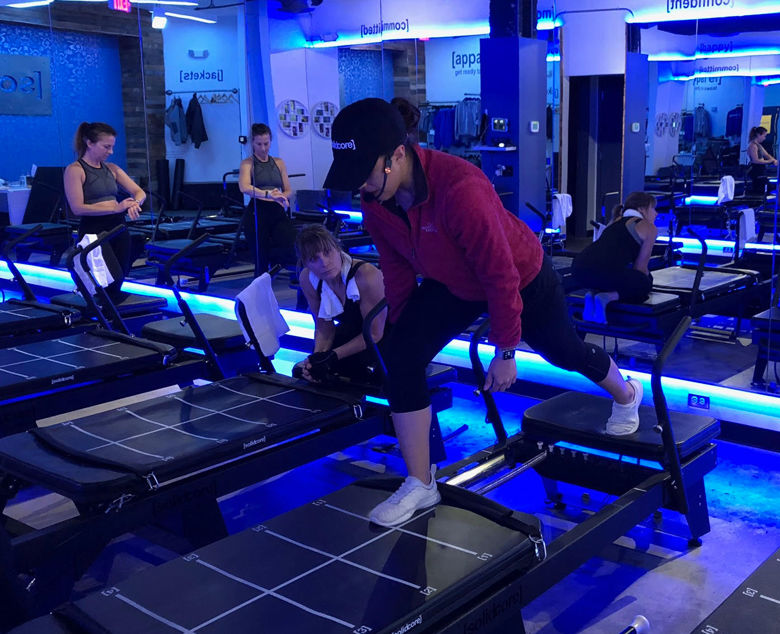
This may be one of the more intimidating classes for first-timers. The amped-up pilates class features a machine that’s similar to the traditional reformer, but it’s longer and wider. The focus of the class (founded in D.C., by the way) is intense, slow movements instead of fast repetitions. However, you will move quickly from one exercise to another in order to hit most major muscle groups in a one-hour class. The key to solidcore is the machine, named “Sweatlana,” and her moving carriage. If you think you are good at doing planks, that’s great. But try doing planks with your feet on a stable platform and your forearms on a moving platform. That’s a different ballgame. The solidcore class can be tricky at times, because sometimes it’s just plain hard to know which direction to face, which straps to pick up, which tension spring to add to the carriage and heck, like many of these classes, it’s really loud. But during my first class, the coach was quickly on hand to help me if I was confused. My main concern ahead of solidcore was that I would leave the class without feeling like I had done a hard workout, due to spending too much time wondering what to do next. But I left drenched in sweat, and glad I walked in the door. The regular full-body classes can be intimidating, but there are pared-down classes for rookies available, too. (WTOP/Dan Friedell)
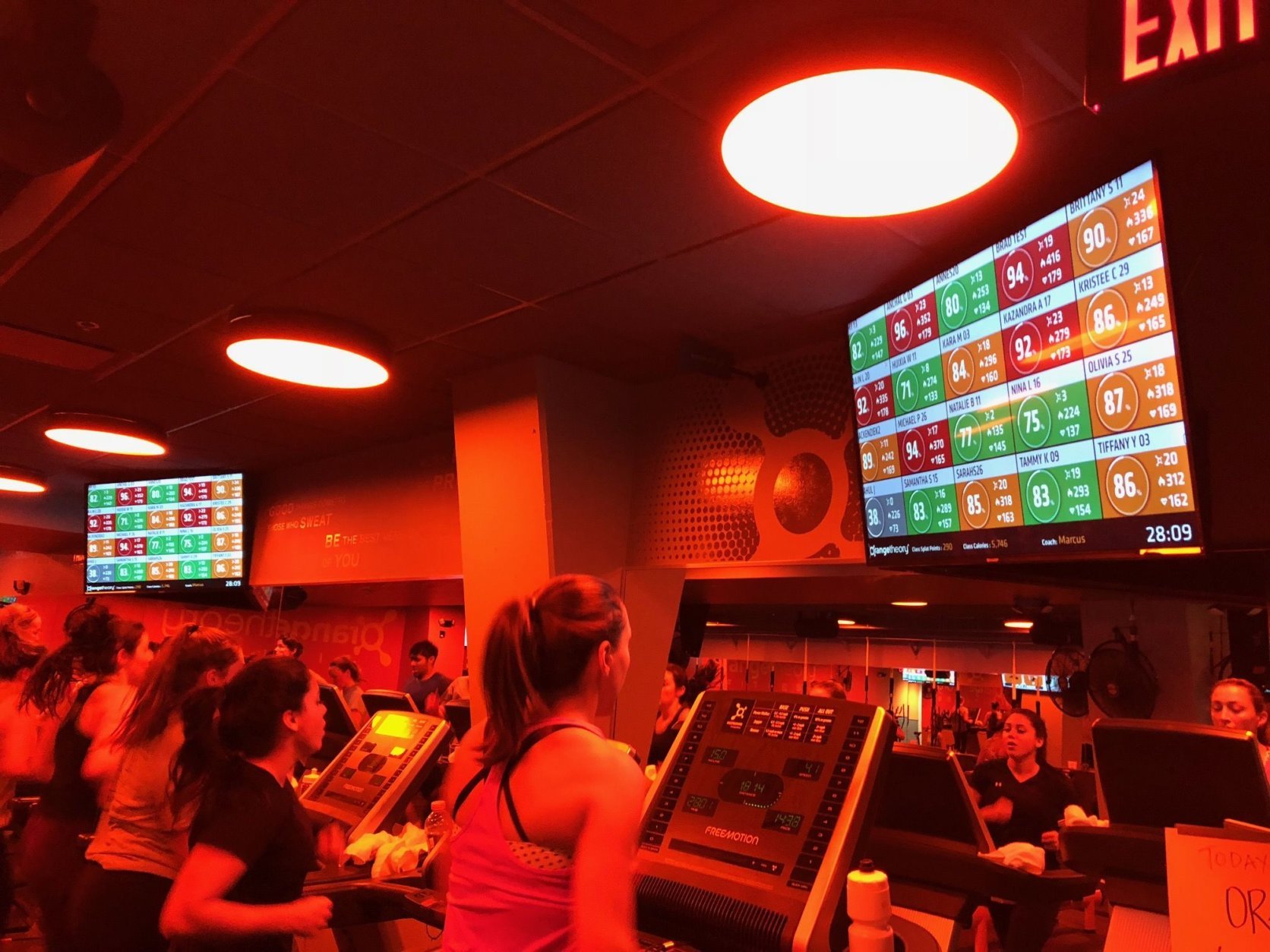
Orangetheory wants you to collect at least 12 “splat points” per class (and hopefully more). As you work out, you’ll see your work rate (based on an equation related to your age, heart rate, weight and fitness level) displayed on video boards throughout the studio. As you go harder, you’ll move from blue to green to orange to red. You get one splat point for every minute that your heart rate is in either the orange or the red zone. The “theory” is that 12 minutes or more in the orange or red zone will provide for a lasting post-class calorie burn. If you’re in the red zone, you’re working at 100 percent capacity or more. The classes typically have one of three themes: power, endurance or strength. You’ll spend about half the class switching between floor exercises or weights combined with pulls on a rowing machine. The other half of the class is spent on the treadmill (some studios have a limited number of bikes or elliptical machines you can use instead.) Be ready for multiple weight/rowing circuits adding up to about 25 minutes and a cardio segment filled with work at “base rate,” “push pace” or “all out.” “All out,” as you probably guessed, is a sprint of 30 seconds to a minute that will leave you gasping. The classes often are pretty full and can be somewhat hectic when groups are changing stations. There is a coach to help cue attendees about what’s coming next, but it takes at least one class to get the hang of how it works. At peak times, you might encounter a “3G” class, which means the weight stations, rowers and treadmills are all full. In this case, you’ll get a workout that includes all three stations equally. (WTOP/Dan Friedell)
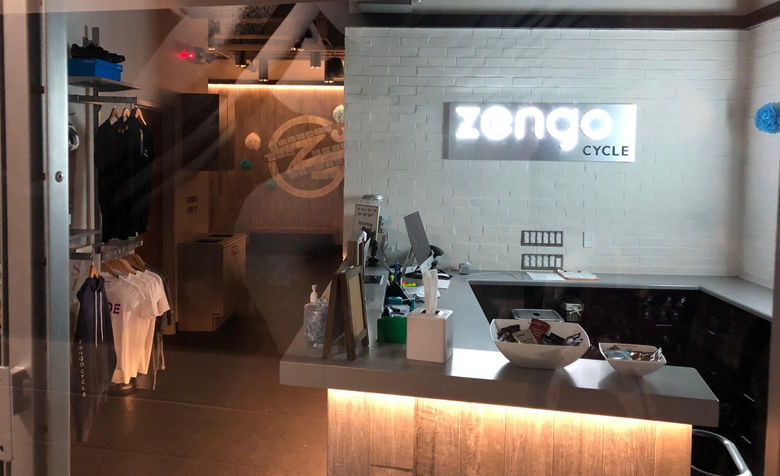
Good, high-energy music helps people get moving and into the mood to workout. That’s actually backed up by science. And with all of these classes, music is a key component. Zengo is the only gym class that makes a point to publicize the music that will accompany the ride; a recent week at D.C.-area locations had the following playlists: Ariana Grande vs. Mariah Carey, Throwback Thursday, Ed Sheeran vs. Maroon 5 vs. Coldplay. While the “dancing on the bike” atmosphere may not be what some cyclists want (those who want to see their work displayed on the Flywheel torqboard, for example) it can be just what some need to get motivated to push through a 45-minute workout. The bikes do not have a display for you to keep track of your work rate or RPM, but the class leader will coach you through how to increase or decrease the tension on your bike. One warning: these classes are extremely loud — louder than any of the other classes in this story. The class leader’s voice could be heard over the music in the gym’s waiting area even with the door closed. There are earplugs available and I suggest you take advantage of them. If you own your own cycling shoes, you don’t need to worry about which cleats to use, they accept both the common SPD cleats and the wider Look Delta-style cleats. (WTOP/Dan Friedell)
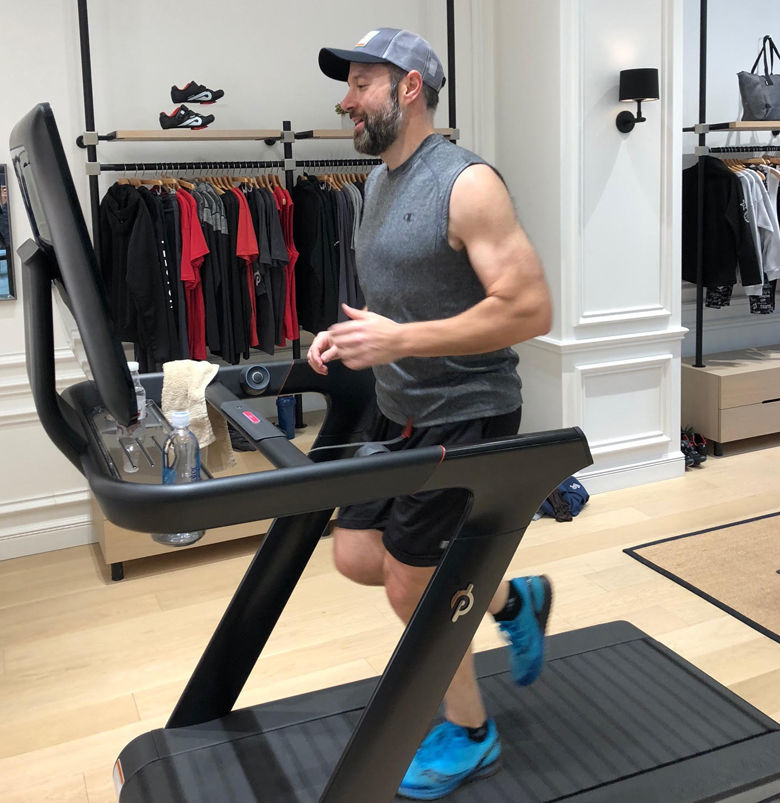
As exercise equipment moves out of the gym and into the home, people are looking for ways to get motivated to use the machines. And for some, that moment has arrived with the advent of at-home bikes, rowers and more with integrated video screens. Take for, example, the Peloton bike, which many people say gives them the same experience of being in a group exercise class, but with the convenience of being at home. These solutions have become so successful, in spite of their high cost of entry, that just about every established in-person exercise class is now developing an app or an at-home component. If you’re not sure about sinking a big chunk of cash into a Peloton bike, there are options that are much easier on your wallet. Take, for example, Aaptiv, which I’ve been using for almost nine months. The app has thousands of pre-recorded workouts that you can either download or stream on your mobile phone. An app like Aaptiv may, in fact, be your best bet if you’re looking for a way to keep yourself motivated all winter long. That’s because the expert coaches, who have recorded all those workouts, allow you to move from a kettle bell workout one day to an elliptical workout the next day, to a dumbbell workout on a third day. All you need is open space or an open machine at the gym (to which you’re probably already paying $60 per month). The best thing about an app (be it Aaptiv or something else) is that you’re not beholden to a gym’s group exercise schedule. If you have time to do a hard 5K or a rowing machine at 10 a.m., you can go do it. If you like to work out at 10 p.m., just start the workout on your iPhone, pair your headphones and get to it. (WTOP/Dan Friedell)
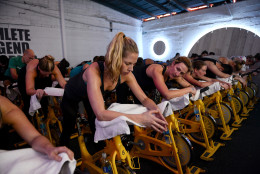
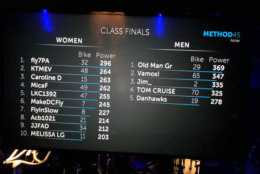
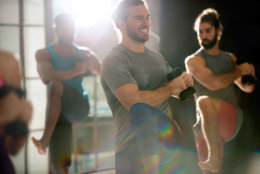
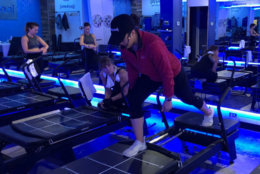
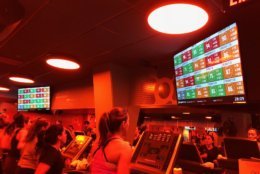
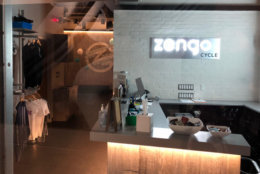
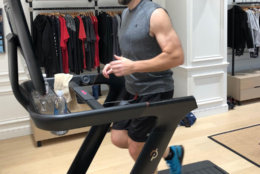
Ebenezer Samuel is the fitness director at Men’s Health and a CSCS-certified trainer. He said it’s important to vary your workouts and not rely on just one kind of gym class. Many of the instructors who lead boutique exercise classes such as solidcore, he said, are focused on moving their attendees from one exercise or bike/run interval to another, but may not be focused on a specific individual’s goals.
“Most group gym stuff is like that,” he said. “They’re not coaching technique, they’re coaching sweat. It’s hard to coach technique in group situations.”
But there’s definitely a place for a class like Flywheel or Corepower Yoga in your workout routine, Samuel said. Also, having a scheduled workout is always helpful for keeping up your fitness resolutions, especially if you have trouble getting your workout clothes on and getting out the door on a frigid morning, or need some inspiration in order to pass on a festive post-work drink with friends in favor of a gym session, he added.
Many boutique classes fill up about a day ahead for peak-time sessions. If you book a class and don’t show up, you will usually forfeit that class from your package or be penalized the cost of the class if you’ve subscribed to an “unlimited” option. Keep an eye out for special holiday and New Year’s promotions that can significantly reduce the per-class cost.
If you can’t choose just one gym class, or your fitness goals require yoga, cardio and the kind of heavy weightlifting you can only do at a traditional gym, the best option may be through an app called Classpass, which currently offers new subscribers the first month free. With Classpass, you purchase a certain number of credits per month, and every class or gym session you book costs a certain number of credits. You can even buy “gym time” and do your own workout a select local gyms. The best thing? Classpass has participating gyms and studios in most major cities.
Keep in mind, however, that prime-time classes, such as a 5:30 p.m. solidcore session, are more expensive than the same class at an off-peak time. If you want to sample dozens of classes before making up your mind to buy a subscription, Classpass is the way to go.
Class-by-class breakdown
SoulCycle
Number of locations in the D.C. area: Four in D.C. (14th Street, Mount Vernon, West End and Georgetown); one in Bethesda.
Cost per class: $30 per class
Free intro class or discount? Yes, the D.C.-area studios have a discounted three-class/$60 promotion for new riders. But there are no free classes.
Are the classes portable? Within D.C., yes, but you may have trouble using credits in studios outside of the area.
Who is this class for? Someone who enjoys cycling and knows how to push themselves without relying on stats for motivation.
Do you have to be in shape? No, but be ready for a sore backside from sitting on the saddle if you haven’t been cycling recently. Bring a water bottle.
Do you need special gear? Shoes with cycling cleats make the workout more efficient. You can buy them on your own once you get into indoor cycling, or rent them at the studio. Shoes are free for your first class.
Is there a learning curve? Yes, there is some choreography in the class. The instructor will tell you which position to get into (standing or sitting) and you should be prepared for some “tap-backs,” where you’re asked to touch your behind to the back of the saddle on cue.
Shower: Most studios at least have well-equipped restrooms with soap, deodorant and more.
Flywheel
Number of locations in the D.C. area: Two (City Center and DuPont Circle)
Cost per class: One class for $30 or packs of five, 10 or 20 for a reduced price. Monthly memberships are available that allow four, eight or 12 classes per month. (Ranges from $100 to $250 per month)
Free intro class or discount: The first class is $15 but you can also buy a three-pack for $65.
Are the classes portable? Yes.
Who is this class for? Indoor cyclists who like statistics. The classes are all about feedback as you push for 45 minutes. Your stats are both on your bike, and on the Torq board (if you opt-in) for all to see.
Do you have to be in shape? No, but like all cycling classes, you should expect some rear-end soreness after the first couple of classes.
Do you need special gear? Padded cycling shorts are a good idea. The studios have cycling shoes available for free.
Is there a learning curve? Not really. This class has some choreography, but it’s not the main focus. Pushing yourself really hard is.
Showers? Yes. Both locations have a great shower and changing area.
Towel service? Yes. One of the few studios you can count on for as many free towels as you need.
CorePower Yoga
Number of locations in the D.C. area: Four in D.C. (CityCenter, DuPont Circle, Georgetown and Glover Park. A new studio opens soon in Tenleytown); one in Bethesda (Md.); five in Northern Virginia (Clarendon, Fairfax Corner, Falls Church, Merrifield and Pentagon City).
Cost per class: $27 per class, $125 for a five-pack, $229 for 10, $429 for 20 (no expiration). For those who want more, a $165/month unlimited yoga membership is available (with a $89 incentive in the first month).
Free intro class or discount? Yes, a free week of classes is available for new students
Are the classes portable? Yes, if you buy a multi-pack of classes, you can go to any studio around the country and use them.
Who is this class for? Yoga 1 provides a good workout for most of those who practice yoga. Corepower also offers more advanced classes, hot yoga, and YogaSculpt which includes weights.
Do you have to be in shape? No, but as usual, it does help to have a certain fitness level.
Do you need special gear? For all the yoga classes, a yoga mat is required. You can rent one at the studio. The first one is gratis. Bring your own towel, one for the class, and one for a post-sweat shower (especially after hot yoga!).
Is there a learning curve? Some yoga experience is helpful. If you don’t already have yoga experience, it makes sense to progress from Yoga 1 to Yoga 2. Most people with a basic understanding of yoga, who are confident in a boot camp-style class will be comfortable with YogaSculpt right away.
Shower? Yes, studios have showers and well-equipped changing rooms.
Towel service? Yes, you can rent a towel for $2.
solidcore
Number of locations in the D.C. area: Six in Washington, four in Maryland, five in Virginia. Solidcore started in the Washington, D.C.
Cost per class: Ten-class packs range from $270 to $330, monthly memberships, which include a set number of classes (4, 8, 12) or an unlimited number of classes, range from $125 to $399. You’ll be offered a special intro rate if you sign up for multiple classes on the spot after your initial class.
Free intro class or discount? Two classes for $39, must be used within 60 days.
Are the classes portable? You can use your classes at any studio with the D.C. area.
Who is this class for? Someone who is in pretty good shape, but wants some help hitting body parts that don’t get challenged by traditional weight exercises such as squats and deadlifts, or endurance athletes who want to boost their core strength.
Do you have to be in shape? It helps to have a good base of core strength and flexibility, otherwise you may find yourself taking a lot of breaks and not getting everything out of your hour.
Do you need special gear? No, not even socks!
Is there a learning curve? Yes, but if you have a good instructor, you will quickly be kept from feeling completely lost.
Shower? No, but well-equipped bathrooms.
Towel service? Yes. Plenty of free towels.
Orangetheory Fitness
Number of locations in the D.C. area: Dozens of locations from as far south as Stafford, Virginia, to as far north as Columbia, Maryland. Visit the locator for specific locations and search based on ZIP code.
Cost per class: Memberships of four, eight or unlimited classes per month are available, as are multi-packs which average between $27-$30 per class depending on the number of classes purchased.
Free intro class or discount: A free introductory class is available, but be ready for a pretty hard sell to buy a membership right after.
Are the classes portable? Yes, you can book classes all around the country through Orangetheory’s app, but you will have to provide credit card information before you arrive to guarantee your spot if you’re coming from out of town.
Who is this class for? Someone looking to sweat and get a full-body workout in one hour.
Do you have to be in shape? It helps to have a good idea of basic weightlifting and rowing technique, and be comfortable working with very little guidance. You can choose to “power walk” instead of run on the treadmill, or use a stationary bike.
Do you need special gear? Supportive running shoes are a must. You can also choose to purchase Orangetheory’s proprietary heart rate monitor, or rent one ahead of each class. These monitors will work with fitness apps on a smartphone, so you can use them for your own workouts, but other heart rate monitors do not connect to Orangetheory’s in-house system.
Is there a learning curve? The first class can be a little disorienting, but once you get into the flow, it’s fairly straightforward.
Shower: Most gyms have at least one shower, but it’s a good idea to call ahead to be sure. Also, bring your own towel, just to be safe that you’re not left dripping wet.
Towel service: Most gyms do not have a towel service. Bring your own.
Zengo Cycle
Number of locations in the D.C. area: Five: Bethesda and Kentlands in Maryland; Mosaic District in Virginia and Logan Circle and Cathedral Commons in D.C.
Cost per class: Varies, depending on location, from $17 off peak to $25.
Free intro class or discount? Yes, one free class, and then new riders can get a three-class trial for $33.
Are the classes portable? Yes, with some restrictions.
Who is this class for? Someone who likes cycling, and music, and really needs a cheerleader/DJ.
Do you have to be in shape? No more than any other cycling class.
Do you need special gear? If you have cycling shoes, you should bring them. Otherwise the rental fee is $3 after the first class.
Is there a learning curve? Not really, in the sense that most people know how to ride a bike. There is some choreography, however.
Shower? Yes, they all have showers, but some locations are fancier than others. The Cathedral Commons location’s waiting area and shower area is top notch.
Towel? Yes, free towels.
At-home coaching apps (Aaptiv, Peloton and others)
Cost: Some are free, some are about $5 per month. Peloton bikes cost about $2,500 with an accessories package, but not including the monthly subscription.
Free intro class or discount? Aaptiv has a free 30-day trial. Peloton will let you test out their bikes in a showroom. (Local showrooms are in Bethesda and Tysons Corner, call or visit to book a test ride.)
Are the classes portable? Anywhere you have a fully charged phone and bluetooth headset, you can do a workout. Aaptiv is great for a hotel gym or even a hotel room. Most group fitness classes now have a “to-go” option.
Who is this for? Someone whose schedule is not conducive to attending group exercise classes or has limited time to get to a gym.
Do you have to be in shape? These classes can get you in shape. There are many levels to choose from. For example, Aaptiv offers beginner, intermediate and advanced workouts in almost every category.
Do you need special gear? It helps to have a yoga mat and some weights, but it’s not required.
Is there a learning curve? If you’re already familiar with some fitness routines, it will eliminate the need to stop and watch a video to remind yourself how to do something like a “renegade row.”
Shower? Yes, the shower at your house!
Towel? Yes, the towel in your linen closet.

